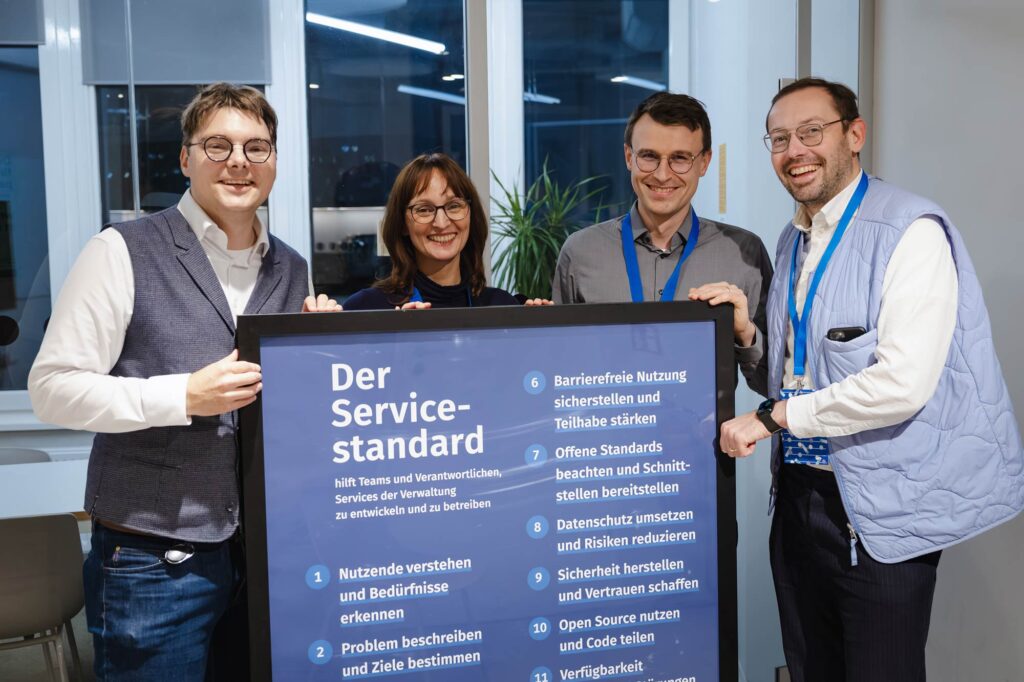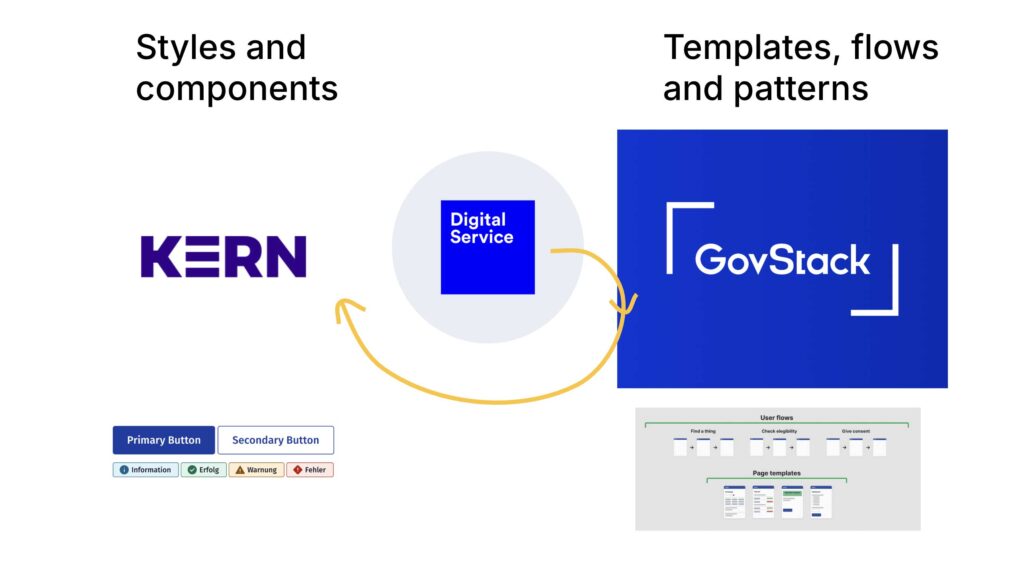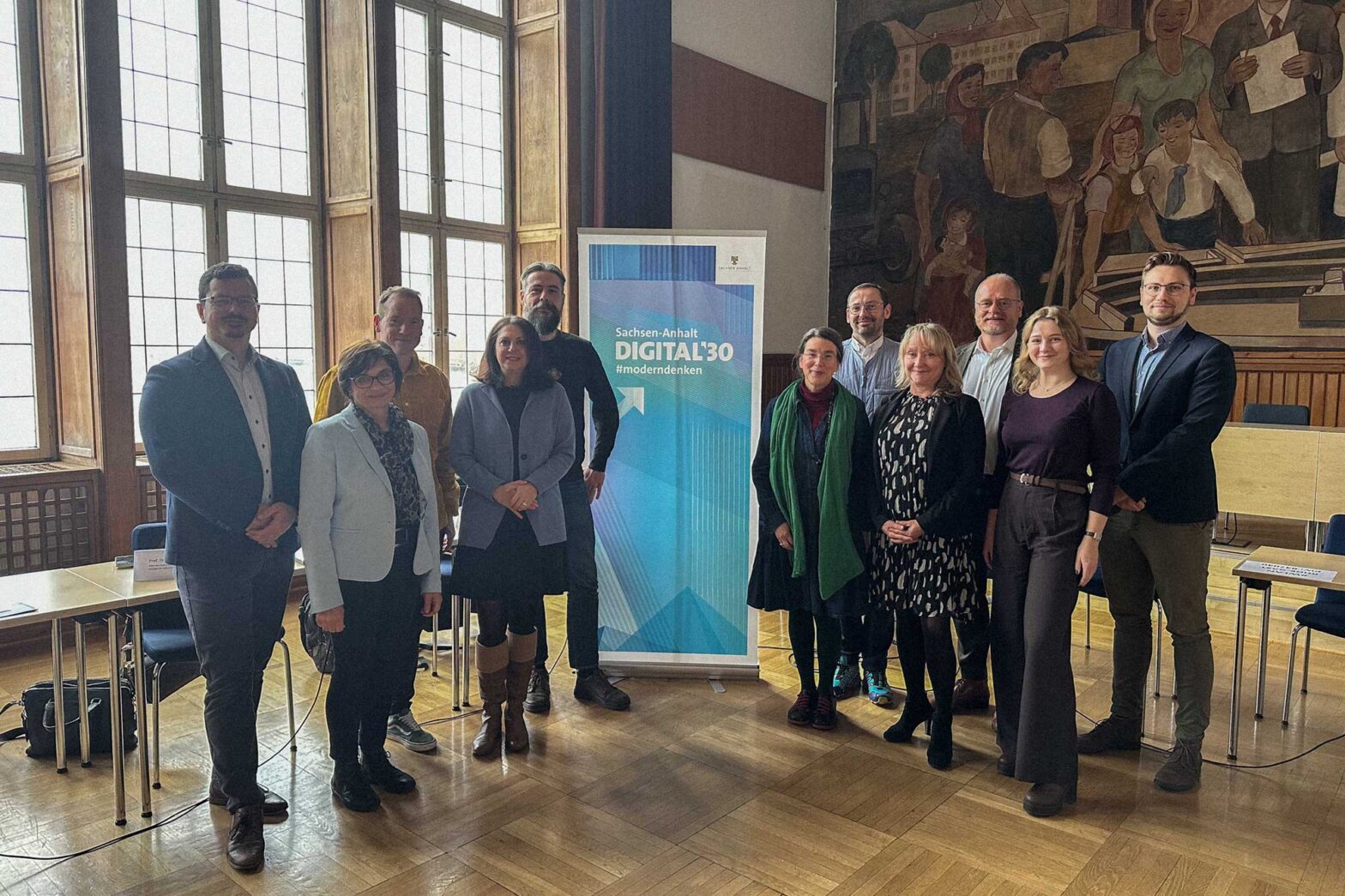This week was an intense one.
It included reviewing new projects, sketching staffing options, helping existing projects prepare for ministerial check-ins and presentations, and a few other tasks.
Thursday was the busiest day.
Joining the Digital Council’s 12th meeting in Dessau
Heading down to the city of Dessau – of Bauhaus fame – in the early morning, I showed up for the 12th meeting of the Digital Council of Saxony Anhalt at 10 am.
We were welcomed by the city’s mayor in the Council Chamber of the town hall building. He shared how the mural in the space had been covered for decades and was only recently laid open. For some previous administrations, it was considered politically too sensitive.
The mayor’s deputy for digital provided us with a somewhat dense overview of their efforts and challenges. He shared with us some of the difficulties he and colleagues are facing with some 200 locked-in caseworking systems. None of them interconnected across services or life events. Only a portion of them can speak to outside APIs.
Change requests are often denied or put on a request board for years in the future. Many caseworking system vendors have a monopoly, or there is an oligopoly. Cities, even when teaming up, have little power.

As I learnt in a follow-up conversation later that day, my colleagues from our interoperability team had already interviewed the City of Dessau’s digital lead. They picked up many of the same points.
The city and state are now exploring the option of bundling services. They conducted an investigation to determine how to merge operations and consolidate caseworkers’ decision-making points into a single location. I asked to learn more about this. With a dozen municipalities merging their digital offerings and related operational capabilities, an applicant might technically receive an answer from Municipality 12 while applying in Municipality 1. Of course, that can all be shielded, but in effect, it would work in that manner. I asked how appeals would be handled and learnt that quite a lot still needs to be figured out.
In the London boroughs of Islington, Camden, and Haringey, digital operations ran in a merged fashion for about two years – from 2016 to 2018. But then, they were un-merged. I wonder what the main barriers were, and I am curious to hear more about the investigation in one of the future Digital Council meetings.
When touching the topic of AI in local government, a member of the council shared one of the wildest stories I had heard yet.
Celebrating 5 years of Digital Service
On Thursday night, we celebrated 5 years of Digital Service.
About a hundred guests came to the office. It was a relatively small, invite-only event. Our CEO, Christina, and state secretary Markus Richter, who’s also heading up Digital Service’s supervisory board, offered the opening speeches. A nicely nuanced panel conversation followed.
On this occasion, people who have carried the Service Standard over the past 5 years posed for a picture. It included policy officer Ralf, who is steering the work from the Federal Ministry of Digitalisation and Government Modernisation. Josephine led the work in the ministry previously, from 2020 to 2021, during the inception of the first version of the standard. Vincent supported it as the managing director of the NExT network and was a member of its sounding board from 2020 until its dissolution in early 2025.

It was a pleasant moment of rejoicing, as we jointly recognised how far we have come.
As part of the spatial setup that designers Bianca and Robin masterfully put together, we had several mounted posters displaying some big numbers.

This included the number of applications received over the past few years, the number of public servants we equipped with new methods, the vast number of deployments made, and the number of services utilising the digital umbrella brand. The number of the latter is 139. It’s a number that is meant to climb fast from here.
Learning about complementary service transformation work
Throughout the week, I attempted to connect some points mentioned in last week’s modernisation agenda with our current work.
I made some progress between Monday and Friday, which was satisfying.
I now have a growing understanding of how the service quality criteria and service audit work mentioned in the agenda can work in conjunction with the Service Standard. Some things are adjacent. They tie into specific standard points or clarify what a good outcome looks like. But nothing should live beyond servicestandard.gov.de. I will learn and share more on this in the coming weeks.
Later on Friday afternoon, I participated in a service pattern workshop. It was the kick-off for our contribution work to KERN’s missing service pattern section.
The hastily prepared slide I shared in the kick-off workshop illustrates what we are trying to do: bring the service pattern thinking from the GovStack library to the more granular KERN design system. We function as a bridge. We filter the templates, flows and patterns documented in GovStack through our experience of 5 years and shape in the form of KERN design system components.

We, a small group of designers, are excited about this work. We prioritised the first 3 patterns to work on. There was close to a 100% match, which was great to see. We plan to have the first pattern ready for publication by the end of the year.
Related, albeit vaguely, we also spoke with some Hungarian colleagues towards the end of the week. We had a longer in-person exchange at the SCCON event at the end of September already. Now, we followed up with the digital umbrella brand team. The conversation strayed further, though, and we touched on migration approaches, central domain management and prohibiting the application of new design components to non-transformed services. There was some good food for thought.
What’s next
Tuesday might be the busiest day of the coming week.
In the evening, we will host a public-facing meetup on ‘visualising data’. It’s our 4th meetup of the year. I’ve been aiming to cover this topic for various years, since seeing the excellent infection radar of the Federal Ministry of Health.
Over lunch, we will run a pizza-powered accessibility check for servicestandard.gov.de.
I have an almost-finished blog post about our work on design systems, shared components, and service patterns. It should not take more than an hour to finish it. I want to get it out next week. Let’s see if I can do that.

